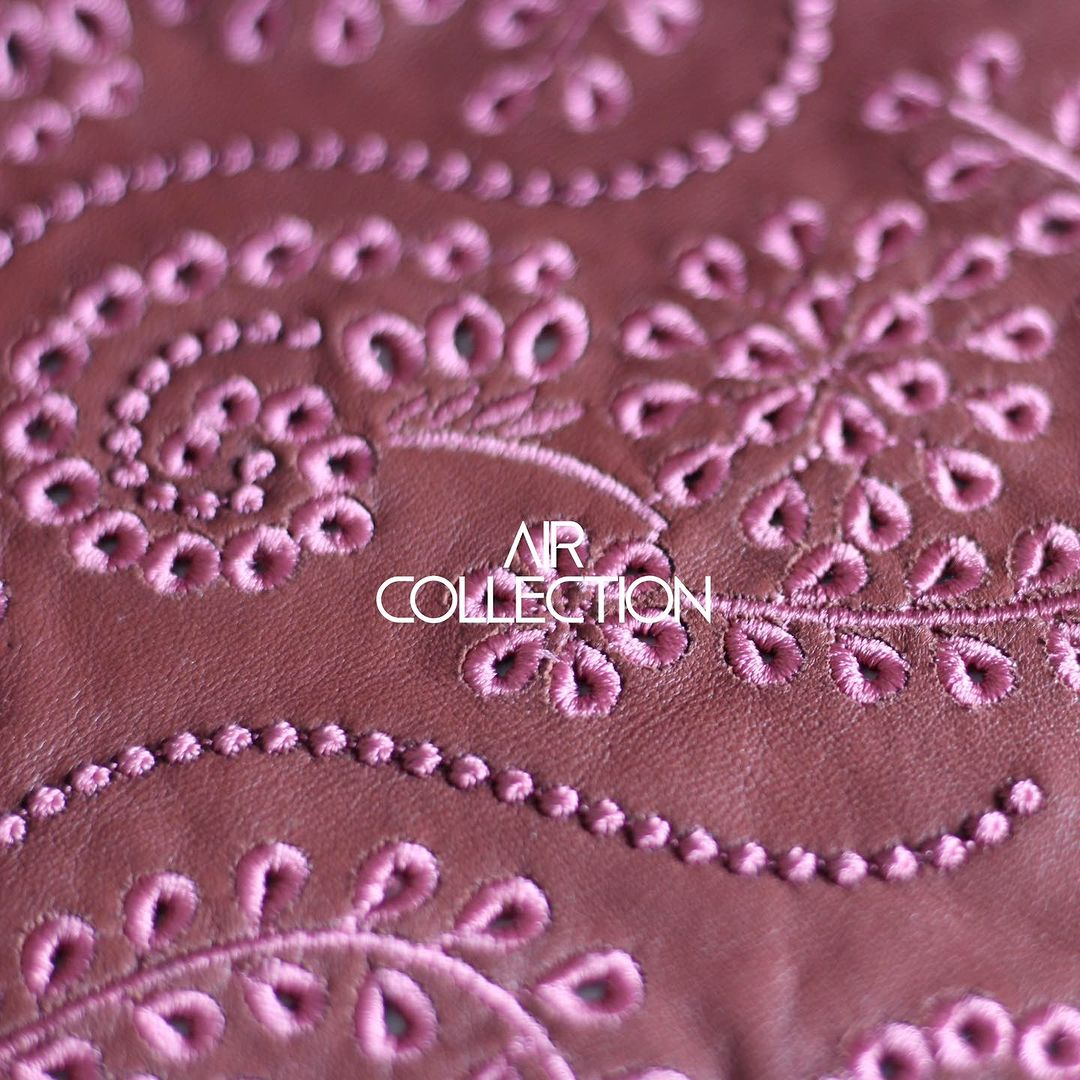Complete guide to St. Gallen embroidery lace: history, characteristics and uses
Initially, St. Gallen embroidery lace was reserved for the European nobility and aristocracy, who appreciated it for its elegance and refinement. Over time, its production spread, but it always maintained a high standard of quality. Today, St. Gallen embroidery lace is synonymous with luxury and tradition, an element that carries with it centuries of history and craftsmanship.
Unique characteristics of St. Gallen embroidery lace: what makes it special
St. Gallen embroidery lace is famous for its distinctive features. Made mainly of cotton, it features embroidered floral and geometric patterns on a transparent base. This type of lace is prized for its durability and ability to hold its shape over time. Another unique feature is the delicacy of the designs, which lends a touch of elegance to any garment or accessory. The quality of the embroidery and the precision of the details make St. Gallen embroidery lace a fine material, ideal for those looking for something truly special.

How to recognize authentic St. Gallen embroidery lace: tips and tricks
Recognizing authentic St. Gallen embroidery lace can be a challenge, but there are a few key aspects to consider. First of all, the quality of the cotton used is a good indicator: it should be soft to the touch but durable. Embroidery should be well-defined and patterns should have perfect symmetry. It is also important to check the seams and edges, which in authentic lace are finished with extreme care. Finally, price can be an indicator: high-quality St. Gallen embroidery lace tends to have a high cost, justified by the complexity of its workmanship.
Uses of St. Gallen embroidery lace in fashion: clothing, accessories and decoration
St. Gallen embroidery lace finds wide use in the fashion world. It is used to make wedding dresses, summer dresses, blouses and skirts because of its ability to add a touch of elegance and sophistication. In addition to clothing, it is also popular for creating accessories such as scarves, foulards and gloves. No less important is its use in interior decoration, where it is used to make curtains, pillows and bedspreads, adding a touch of class and tradition to rooms.
Maintenance and care of St. Gallen embroidery lace: practical tips
Taking care of St. Gallen embroidery lace is essential to maintain its beauty over time. This delicate fabric requires hand washing with neutral detergents, avoiding the use of bleach or harsh chemicals. It should be dried in the shade to preserve the colors and ironed at a low temperature, preferably with a cloth on top to avoid direct contact with the iron. Proper maintenance will ensure that St. Gallen embroidery lace retains its brightness and integrity over time.
St. Gallen embroidery lace in weddings: ideas and inspirations for the bride
St. Gallen embroidery lace is a popular choice for wedding dresses because of its elegance and delicacy. It can be used for the entire gown or for details such as the veil, bodice or sleeves. Its versatility allows you to create both classic and modern looks, adapting to different wedding styles. In addition to the gown, St. Gallen embroidery lace can also be used for accessories such as gloves, belts, and headbands, helping to create a refined and harmonious coordinate.
St. Gallen embroidery lace compared to other types of lace
St. Gallen embroidery lace is clearly distinguished from other types of lace by its unique workmanship and the high-quality materials used.
Differences between St. Gallen embroidery lace and Chantilly lace
One of the main points of comparison is with Chantilly lace, known for its lightness and intricate patterns. Chantilly lace, which originated in France, is made from fine threads and features detailed and delicate designs, often with a sheer effect that lends an ethereal and romantic air. In contrast, St. Gallen embroidery lace is more robust and has more defined and structured designs. St. Gallen embroidery lace patterns are generally embroidered on a cotton base, creating a more uniform and durable texture.
Macramé lace vs St. Gallen embroidery lace
Another significant difference is observed when comparing St. Gallen embroidery lace with macramé lace. Macramé is a weaving technique that uses knots and weaves to create three-dimensional designs. This type of lace is often more voluminous and less refined than St. Gallen embroidery lace, which relies on precise and intricate embroidery done on a base fabric. Macramé, with its complex knots, offers a coarser, more rustic texture, while St. Gallen embroidery lace maintains a more elegant and sophisticated look, ideal for garments and decorations that require a touch of class.
Differences between St. Gallen embroidery lace and Brussels lace
When it comes to Brussels lace, we notice additional differences. Brussels lace is renowned for its fine details and the use of very fine threads, often linen, to create intricate designs. This lace, originally from Belgium, is highly valued for its fineness and delicacy. St. Gallen embroidery lace, on the other hand, uses mainly cotton, giving its designs greater strength and durability. While Brussels lace is often chosen for applications that require extreme delicacy, St. Gallen embroidery lace is preferred for its strength and ability to hold its shape over time.
Comparison of St. Gallen embroidery lace and Alençon lace
Finally, if we compare St. Gallen embroidery lace with Alençon embroidery lace, known as the "queen of lace," we find that the latter is famous for its embossed floral motifs and very fine needlework technique. Alençon lace is extremely laborious to produce, with each piece requiring hours of meticulous work. St. Gallen embroidery lace, while also detailed, offers greater versatility due to its durability and the variety of designs available, making it suitable for wider, everyday use.
St. Gallen embroidery lace, with its combination of elegance, durability and versatility, remains an excellent choice for those seeking a refined, high-quality material.